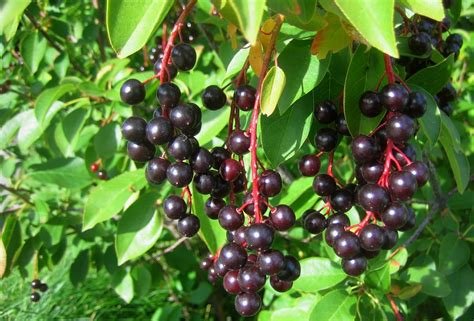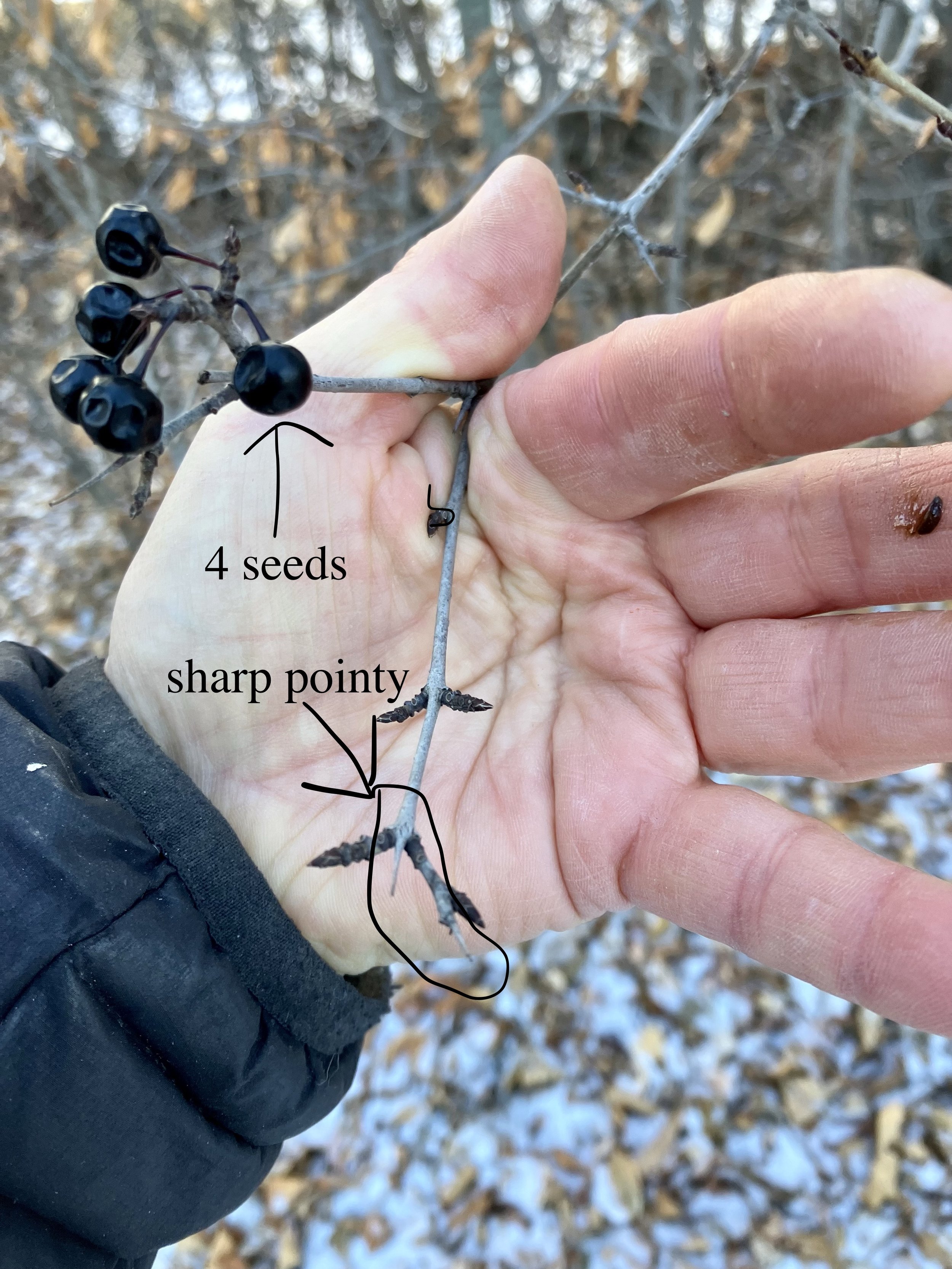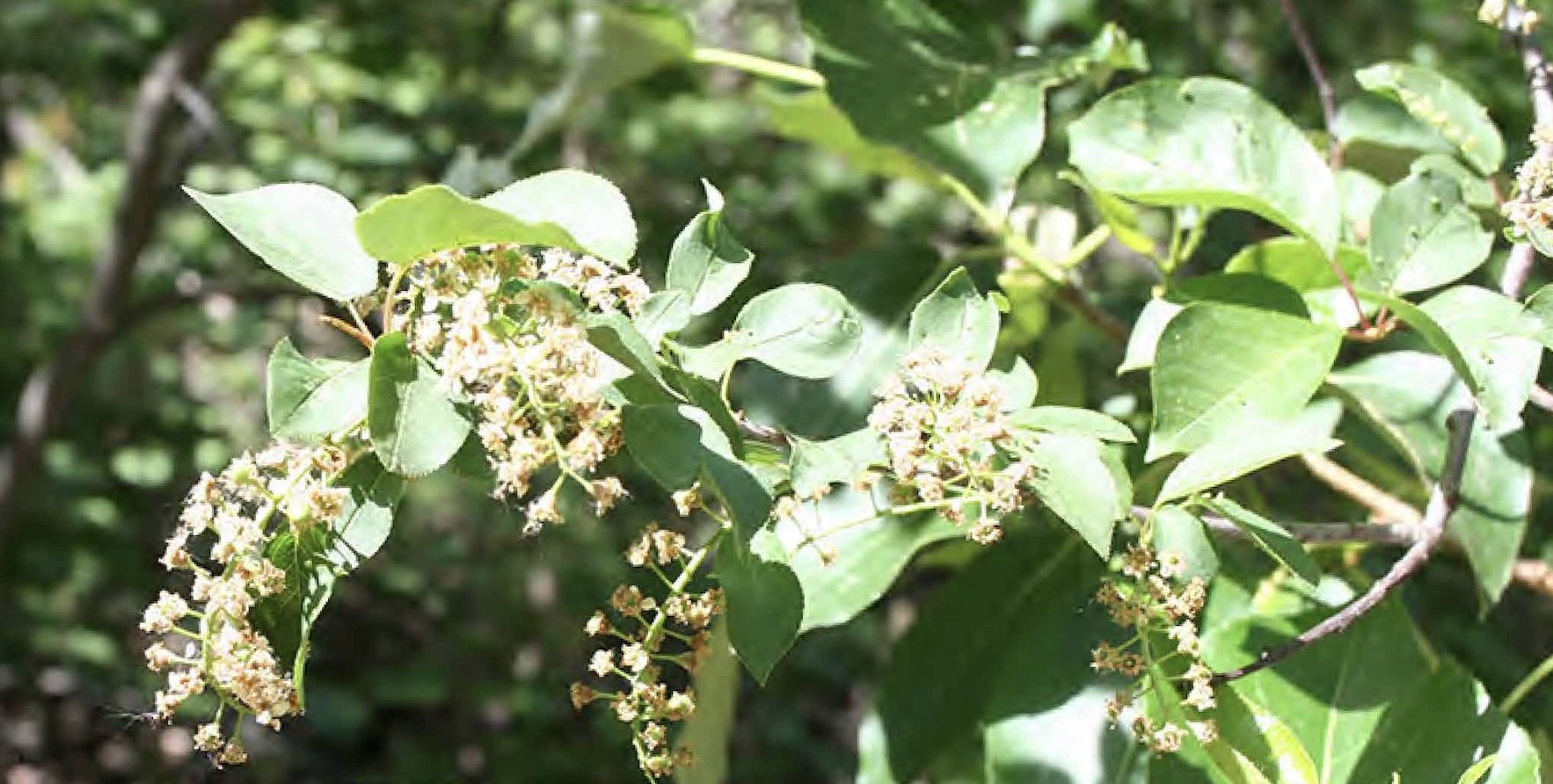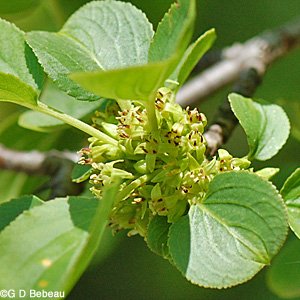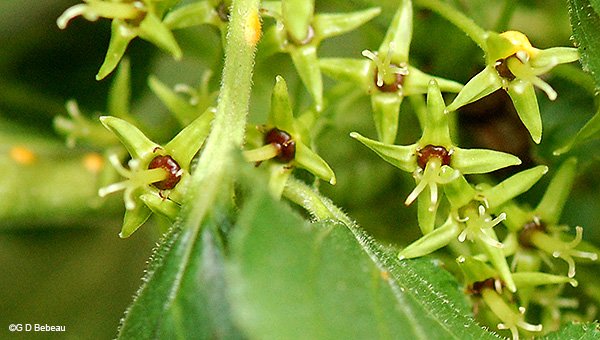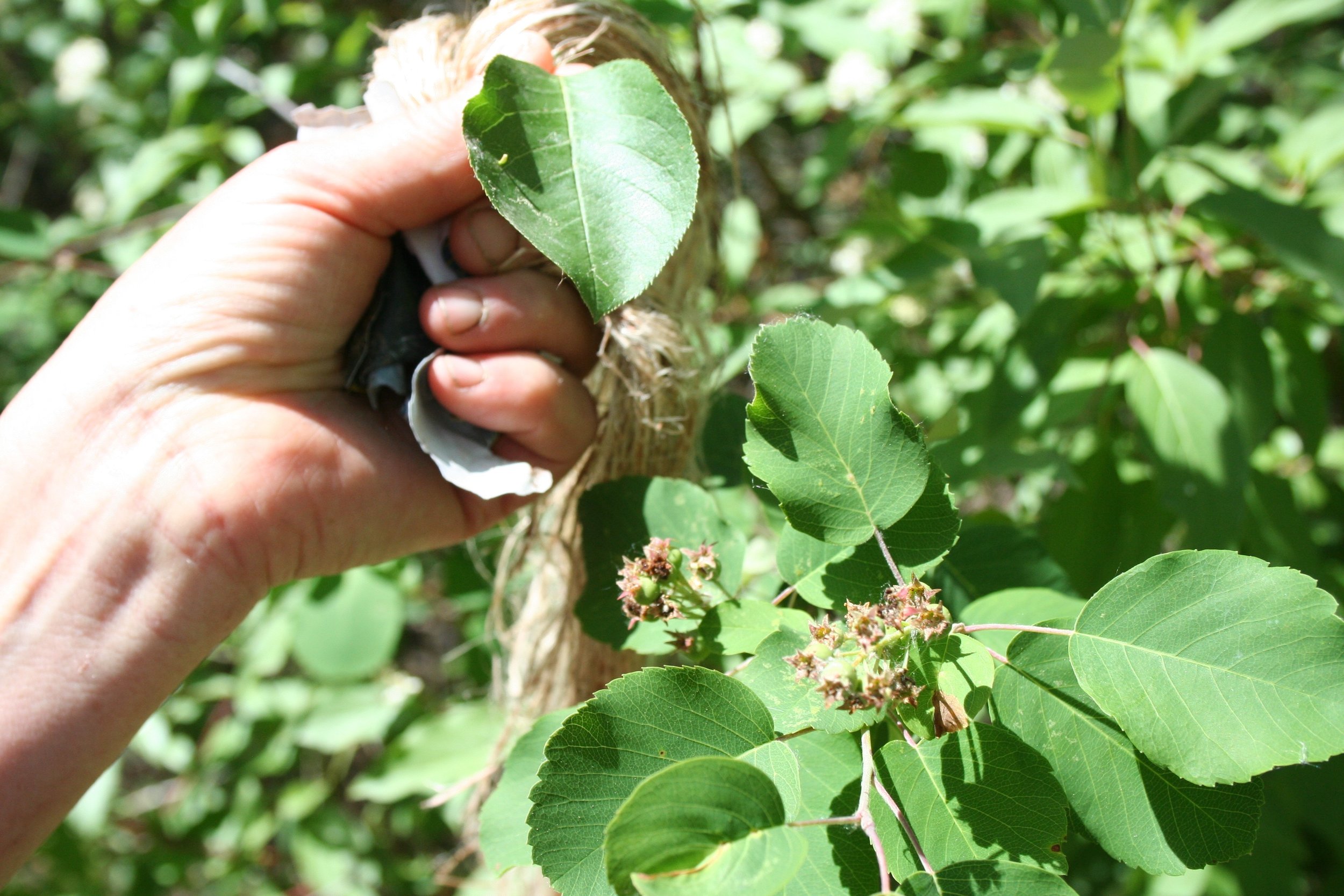Four dark berried shrubs in the river valley.
People get confused between Chokecherry (Prunus virginiana) and Common buckthorn (Rhamnus cathartica) also known as European buckthorn. Both are very common in the valley. One was brought by settlers and the other is indigenous (Chokecherry).
Chokecherry (left) in summer Common Buckthorn (right) winter
Common Buckthorn is notable for being one of the earliest shrubs to leaf out and it also stays green very late into fall. The city notes common buckthorn is “invasive”. However, to paraphrase Beaver Bundle holder, Ryan Firstdiver, perhaps settlers should humble themselves. They bring new plants and then wage war against them often using poisons. Ryan notes we are here to learn from plants and animals so we can mature as a species.
Some of us at ERVCC have observed buckthorn and chokecherry across the seasons and have learned a few ways to tell them apart. Here is a list:
Chokecherry has one seed inside and buckthorn has 3-4 (usually 4).
Chokecherry does not have the little sharp bits that buckthorn has (see above).
Chokecherry has showy white flowers and buckthorn’s flowers are inconspicuous.
Buckthorn is dioecious (each produces only male or female flowers). Bucktorn has girl and boy plants. Only the girls have fruits. Chokecherry is monoecious, meaning that individuals have both male and female parts.
Chokecherry (left) Common buckthorn (male flower middle, female right)
So what about Saskatoon, Amelanchier alnifolia? We think that one is easier to ID because the fruit does not have pits and it doesn’t pucker your mouth. Saskatoon is a great plant to eat and observe in the river valley. You can contribute to citizen science by learning about the plant and adding data to Alberta Plant Watch. The plant watch site has pictures of Saskatoon in its various stages. Even once you think you know a plant you might have a hard time with ID in different seasons and if the plant is very old or very young. Our experience has been that we need to stay curious and share challenges with others. Different people notice different things and learning with others is fun.
Saskatoon white flowers fading and fruit forming.
There is at least one more common plant that might fool you with its little dark blue berries and that is, cotoneaster (Cotoneaster lucidus) or hedge cotoneaster. It is a hedge plant that has escaped into the river valley. Cotoneaster does not usually grow as tall as the tree/shrubs of Chokecherry, Saskatoon or Common buckthorn. The very dark blue/black fruits have 1-5 seeds inside. I find typically 2 or 3. If you want to learn about fruiting shrubs in the river valley subscribe to Dustin Bajer’s email list. Another great shortcut to plant ID is iNaturalist! It does not take long to learn how to use iNaturalist and it’s free.
Cotoneaster in winter. How did we know? We have made an effort to get to know our kin!

